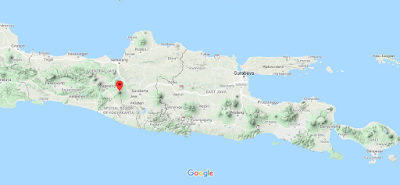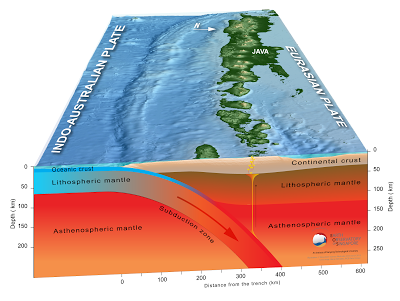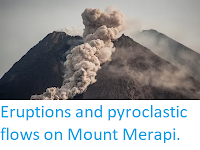Slightly over 250 people were evacuated from their homes temporarily following a series of eruptions on Mount Merapi, a 2970 m stratovolcano (cone-shaped volcano made up of
layers of ash and lava) in Central Java, considered to be one of
Indonesia's most active, that began slightly before midnight local time on Wednesday 9 March 2022. The volcano underwent a series of major eruptions between midnight and 2.00 am on Thursday 10 March, producing a series of lava rivers and pyroclastic flows. This prompted the Badan Nasional Penanggulangan Bencana to extend the exclusion zone around the volcano from 3 km to 7 km on a temporary basis, prompting the evacuations. The eruptions persisted till Friday 11 March, although they decreased in severity over time.

Mount Merapi lies in a densely populated area of Java, on the borders of
Central Java and Yogyakarta Provinces, only 28 km to the north of
Yogyakarta city. It has been erupting more-or-less continuously since
1548, and has been responsible for numerous fatalities, most recently in
1994 when a pyroclastic flow (avalanche of hot gas and ash) killed 27
people, mostly in the town of Muntilan, to the west of the volcano.
Since then Merapi has undergone tow major eruptive episodes, in 2006 and
2010, without any further loss of life, largely due to prompt
evacuations by Indonesian authorities.

The Indo-Australian Plate, which underlies the Indian Ocean to the south
of Java, is being subducted beneath the Sunda Plate, a breakaway part
of the Eurasian Plate which underlies Java and neighbouring Sumatra,
along the Sunda Trench, passing under Java, where friction between the
two plates can cause Earthquakes. As the Indo-Australian Plate sinks
further into the Earth it is partially melted and some of the melted
material rises through the overlying Sunda Plate as magma, fuelling the
volcanoes of Java and Sumatra.
See also...



Follow Sciency Thoughts on Facebook.
Follow Sciency Thoughts on Twitter.









